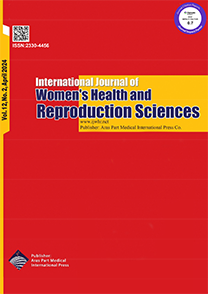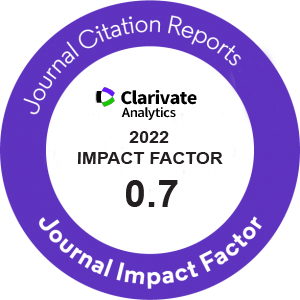| Original Article | |
| Comparative Evaluation of Septolysis Surgery and Pregnancy Outcome in Resectoscope Versus Hysteroscopic Scissor | |
| Leili Hafizi, Seyedeh Azam Pourhoseini, Mona Jafari, Mina Bradaran, Golrokh Sherafati | |
| Supporting of the Family and the Youth of Population Research Core, Department of Obstetrics and Gynecology, Imam Reza Hospital, Faculty of Medicine, Mashhad University of Medical Sciences, Mashhad, Iran | |
|
IJWHR 2024; 12: 089-093 DOI: 10.15296/ijwhr.2024.6011 Viewed : 145 times Downloaded : 108 times. Keywords : Septolysis, Hysteroscopy, Resectoscope, Scissor, Pregnancy |
|
| Full Text(PDF) | Related Articles | |
| Abstract | |
Objectives: This study aimed to evaluate the short-term and long-term outcomes of adopting two types of resectoscopes and hysteroscopic scissors metroplasty methods. Methods: In this prospective, comparative, and cohort study, participants who were candidates for septum resection were recruited during 2015-2018. The uterine septum was removed using hysteroscopic scissors or a resectoscope. The second-look hysteroscopy was performed in the follicular phase after two months. In the second-look hysteroscopy, surgery outcomes were evaluated, and the residual septa or adhesions were removed in case of incidence. The study followed participants for up to five years to observe pregnancy outcomes. This involved recording the duration from hysteroscopy to pregnancy and determining if these pregnancies led to live births. Results: A total of 119 female patients with a mean age of 30.20 ± 6.14 years were enrolled in this study, out of who 62 cases (52.1%) were in the hysteroscopic scissors group, and 57 cases (47.9%) were in the resectoscope group. The 63 (52.9%) cases had primary infertility, and the prevalence of abortion was 46 (38.7%). During the second look, hysteroscopy adhesion was diagnosed in 18 cases (15.1%), and septum residue was seen in 49 cases (67.1%). The adhesion rate in the hysteroscopic scissors group was higher than that in the resectoscope group, but it was insignificant (P = 0.223). At the second follow-up stage, only 85 patients out of 119 ones were available. The successful pregnancy rate was 46 out of 85 (54.1%). The mean age of the patients in the successful pregnancy group was significantly lower than that in the unsuccessful pregnancy group (P < 0.001). Conclusion: There were no differences among resectoscope and hysteroscopic scissor methods’ outcomes in term of metroplasty associated with septate uterus (SU). |
Cite By, Google Scholar
Google Scholar
PubMed
Online Submission System
 IJWHR ENDNOTE ® Style
IJWHR ENDNOTE ® Style
 Tutorials
Tutorials
 Publication Charge
Women's Reproductive Health Research Center
About Journal
Publication Charge
Women's Reproductive Health Research Center
About Journal
Aras Part Medical International Press Editor-in-Chief
Arash Khaki
Mertihan Kurdoglu Deputy Editor
Zafer Akan






















